Posterolateral (Thompson) approach to the pediatric radius
1. Introduction
The posterolateral (Thompson) approach offers good exposure of the middle and distal thirds of the radial shaft. The skin incision lies straight down the dorsal aspect of the forearm and its length depends on the exposure needed.
The landmarks for skin incision are:
- Proximal: the lateral epicondyle (note that the skin incision should not extend to the lateral epicondyle)
- Distal: Lister’s tubercle
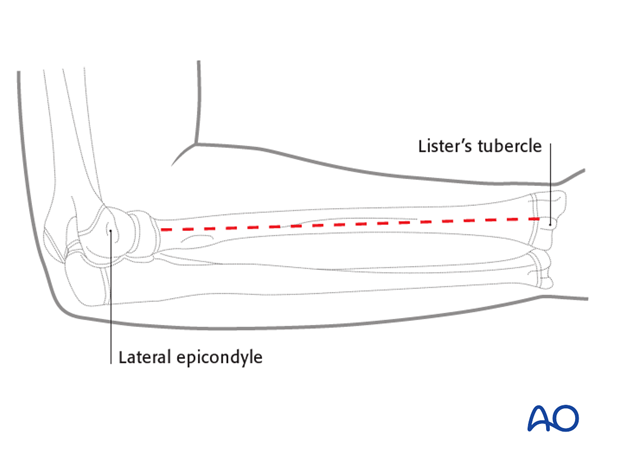
This illustration shows the extent of the posterolateral approach to the middle third of the radial shaft with an extension to its distal third.
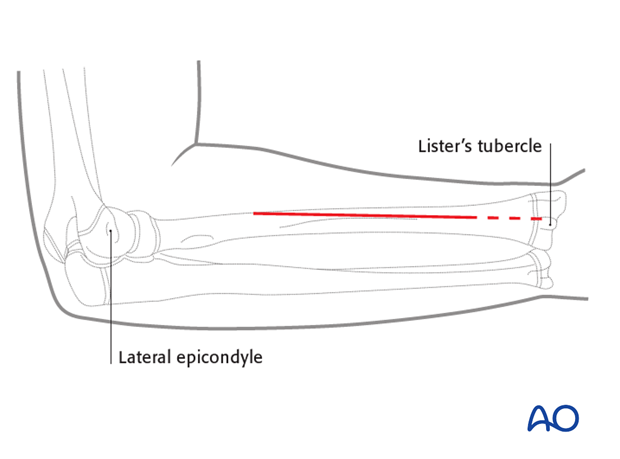
2. Skin incision
Incise the skin and subcutaneous tissues. In the distal part of the incision, be aware of the superficial radial nerve and the cephalic vein.
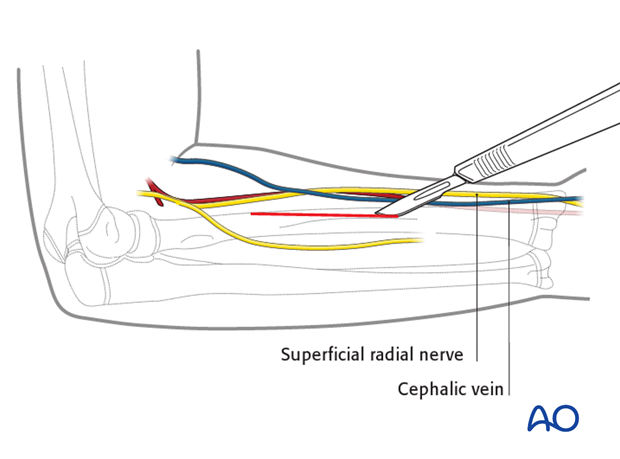
3. Deep dissection - middle third
Start the deep dissection distally at the proximal border of the oblique crossing of the abductor pollicis longus over the dorsal surface of the radius.
Develop the plane deep to the abductor pollicis longus and lift the belly with a retractor to give access to the underlying radius.
Continue the dissection proximally between the extensor carpi radialis brevis, which should be retracted laterally, and the extensor digitorum communis which should be retracted medially.
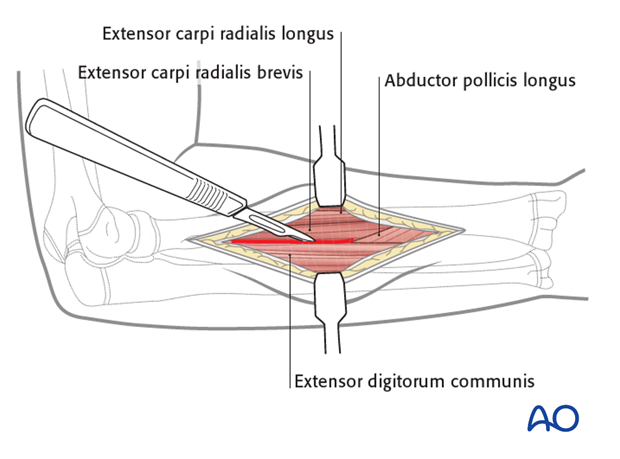
Exposure of the supinator and abductor pollicis longus
Retract the extensor carpi radialis brevis and the extensor digitorum communis ...
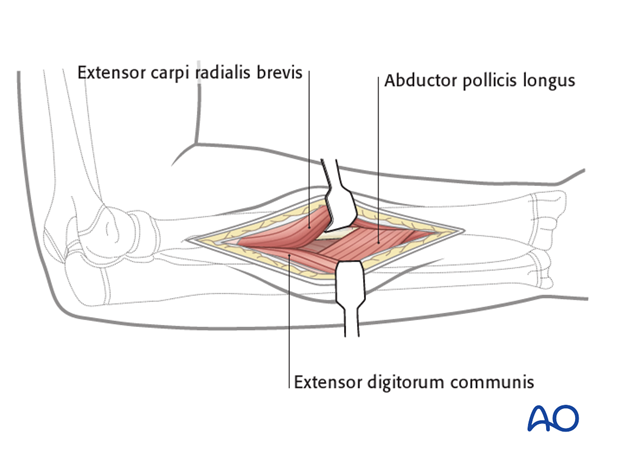
… and expose the supinator proximally and the rest of the abductor pollicis longus distally.
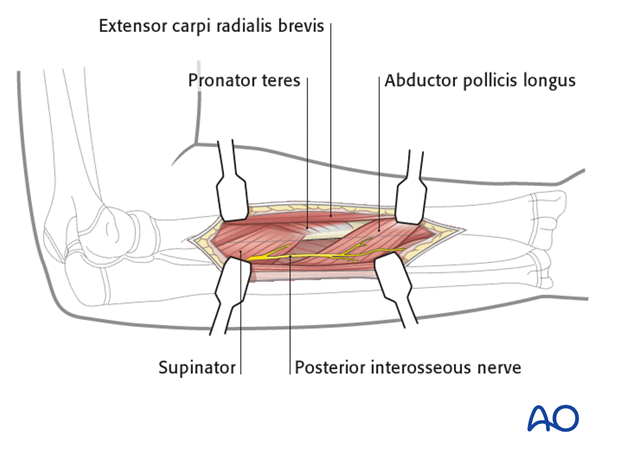
Rotation of the forearm
Fully supinate the arm to bring the origin of the supinator into view and to move the posterior interosseous nerve (PIN, also known as deep branch of the radial nerve) away from the area of dissection.
Some elevation of the supinator attachment to the radius is usually necessary to expose the underlying shaft.
If the fracture configuration requires mobilization of the pronator teres, partially divide it at its insertion into the radius, leaving sufficient tendinous cuff attached to the radius to aid subsequent repair.

4. Deep dissection - extension to proximal third
Note: Proximal extension of the exposure of the middle third carries considerable risk unless great care is taken to avoid injury of the posterior interosseous nerve.
The supinator wraps around the upper part of the radius. Identify the posterior interosseous nerve, which runs within its substance. Protect it as it traverses the muscle. To verify the position of the nerve, make a small hole in the supinator muscle, three patient finger breadths distal to the flare of the radial neck. This position is an approximate landmark for finding the nerve and can be marked preoperatively using the fingers of the opposite hand of the child.
The nerve can also be felt as a bulge in the muscle.

To elevate the supinator make an incision along its insertion into the radius. This may be aided by a degree of supination of the forearm.
Elevate the supinator subperiosteally to protect the posterior interosseous nerve.
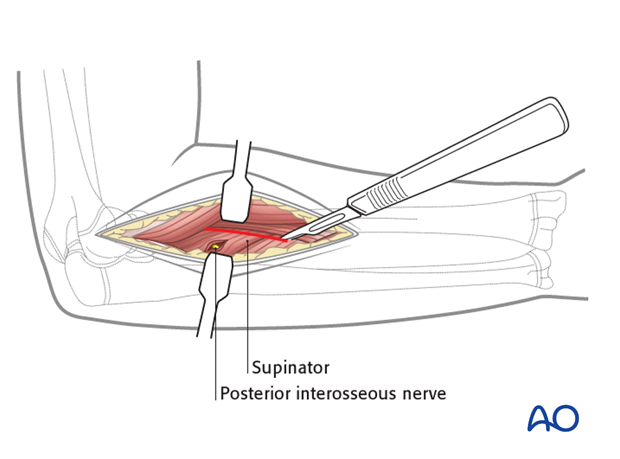
5. Deep dissection - distal extension
Extend the skin incision to the Lister’s tubercle.
Undermine the abductor pollicis longus and extensor pollicis brevis and lift them up with a vessel loop.
Towards the Lister’s tubercle, retract the tendon of the extensor carpi radialis longus laterally.
Distally, a partial incision of the extensor retinaculum is often necessary.
Respect the extensor pollicis longus tendon on the medial side of the tubercle.
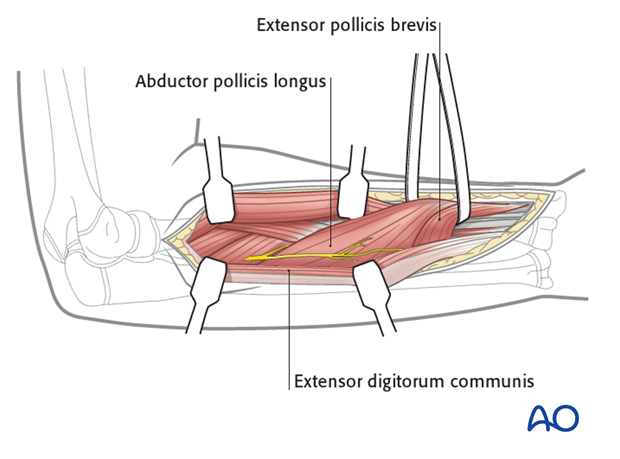
6. Approach for minimally invasive techniques
A modification of the described open approach is the minimally invasive technique, making a small incision over the fracture. Gently part the underlying muscles by blunt dissection.
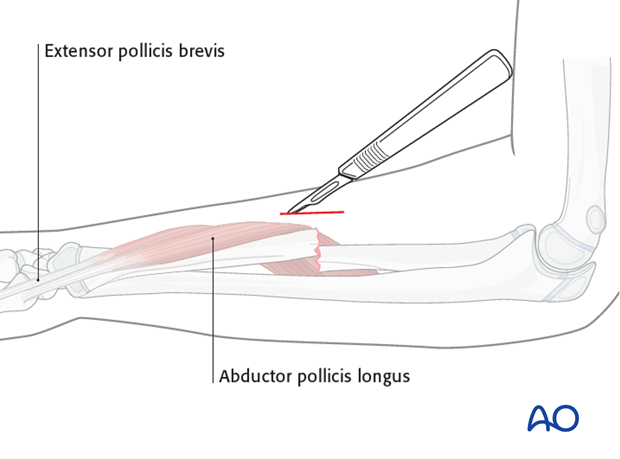
7. Wound closure
Generally, the muscles do not need reattachment as they fall back to the anatomical position. The fascia should not be closed after forearm approaches because of the risk of compartment syndrome.
Close skin and subcutaneous tissue with fine resorbable sutures (this avoids distress to the child when removing nonabsorbable sutures).













